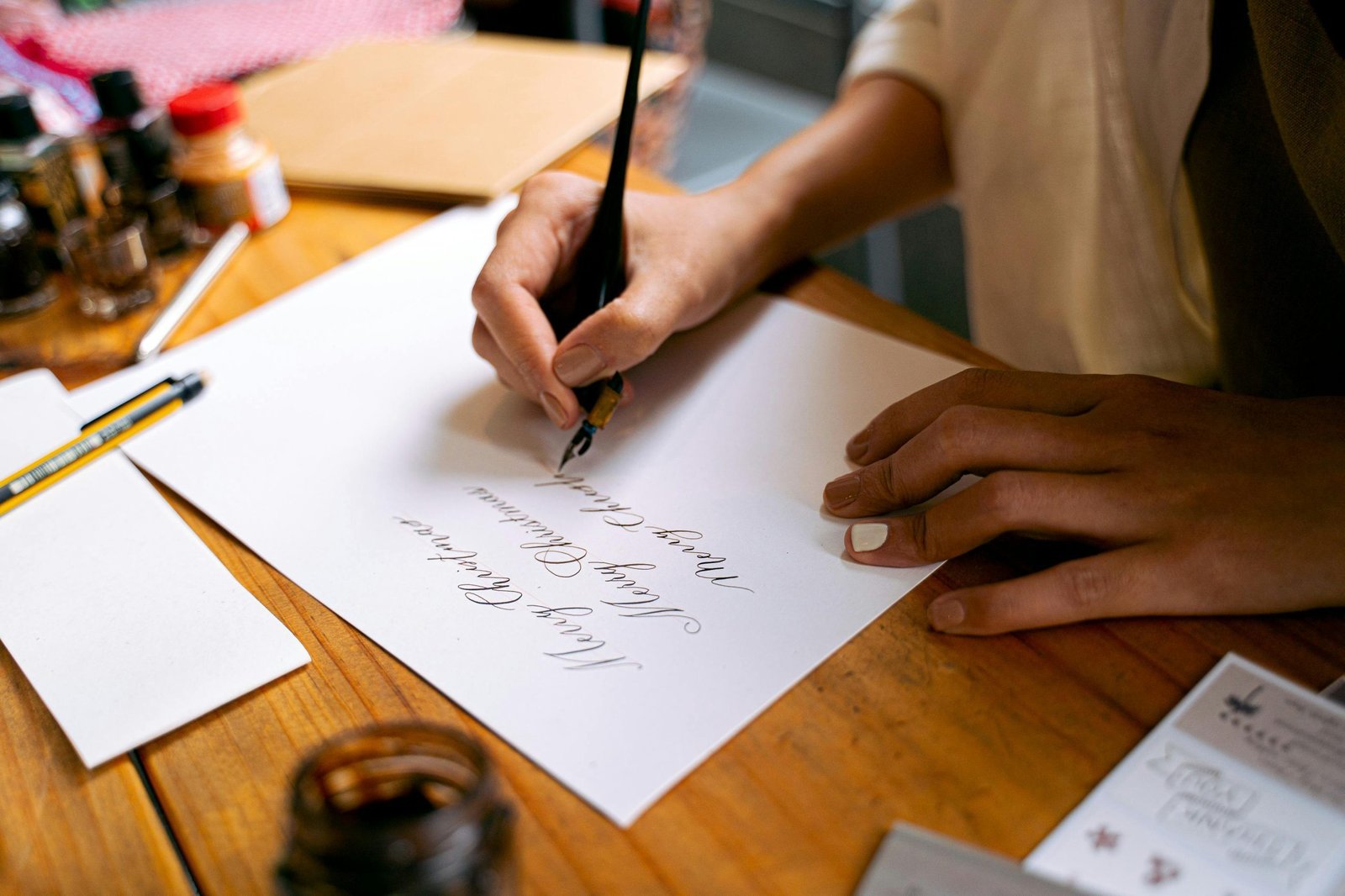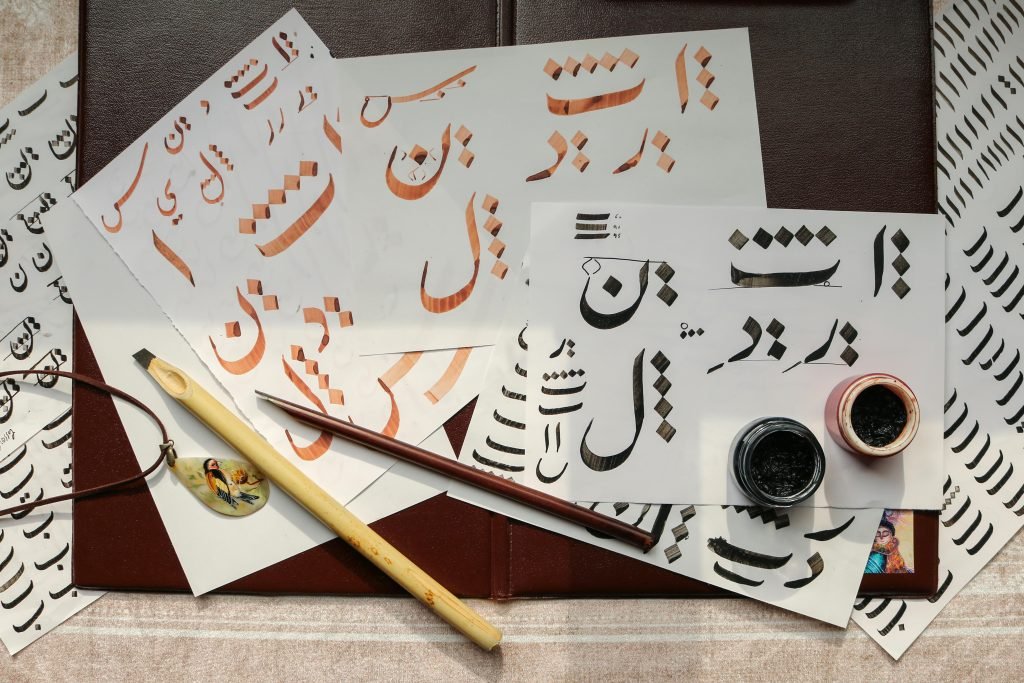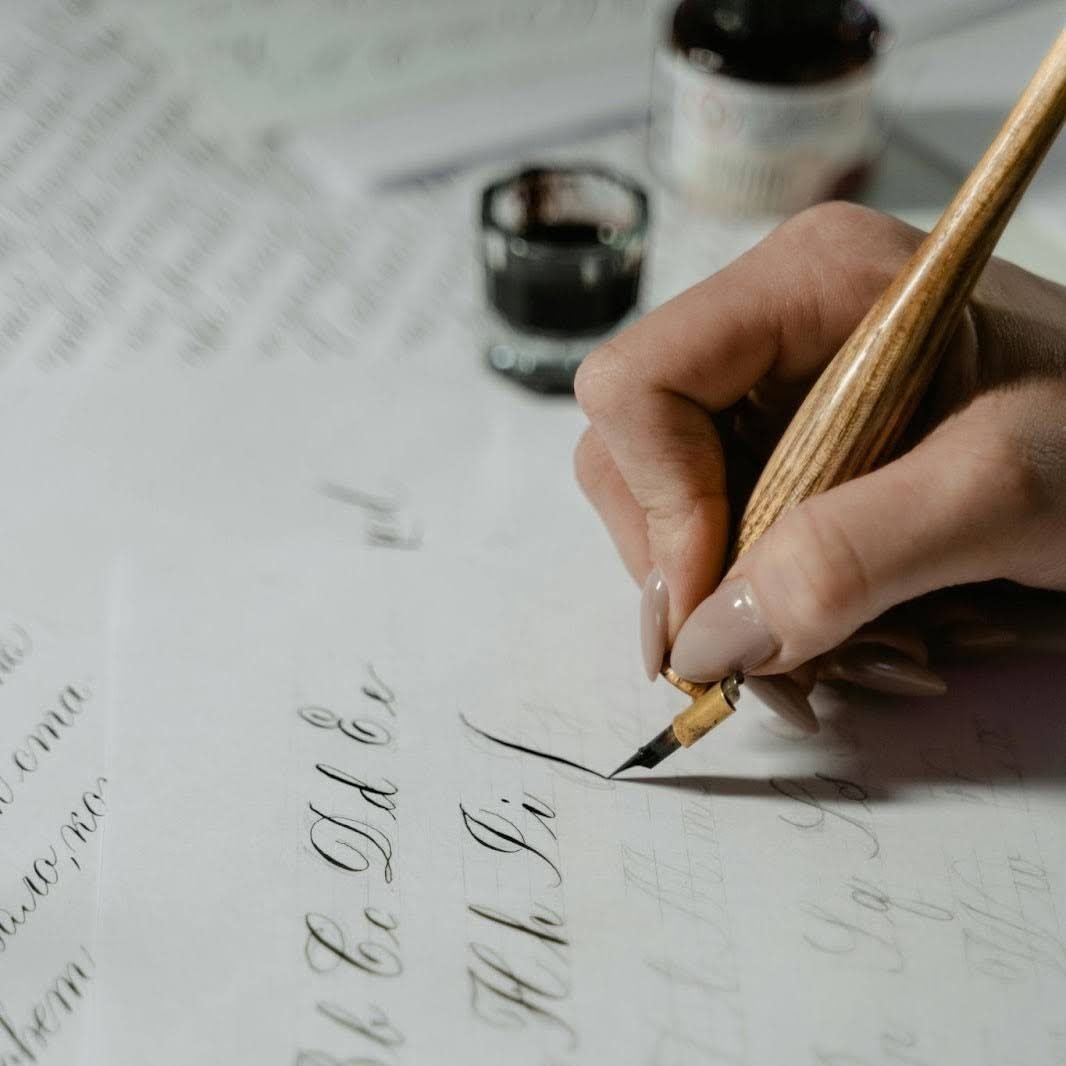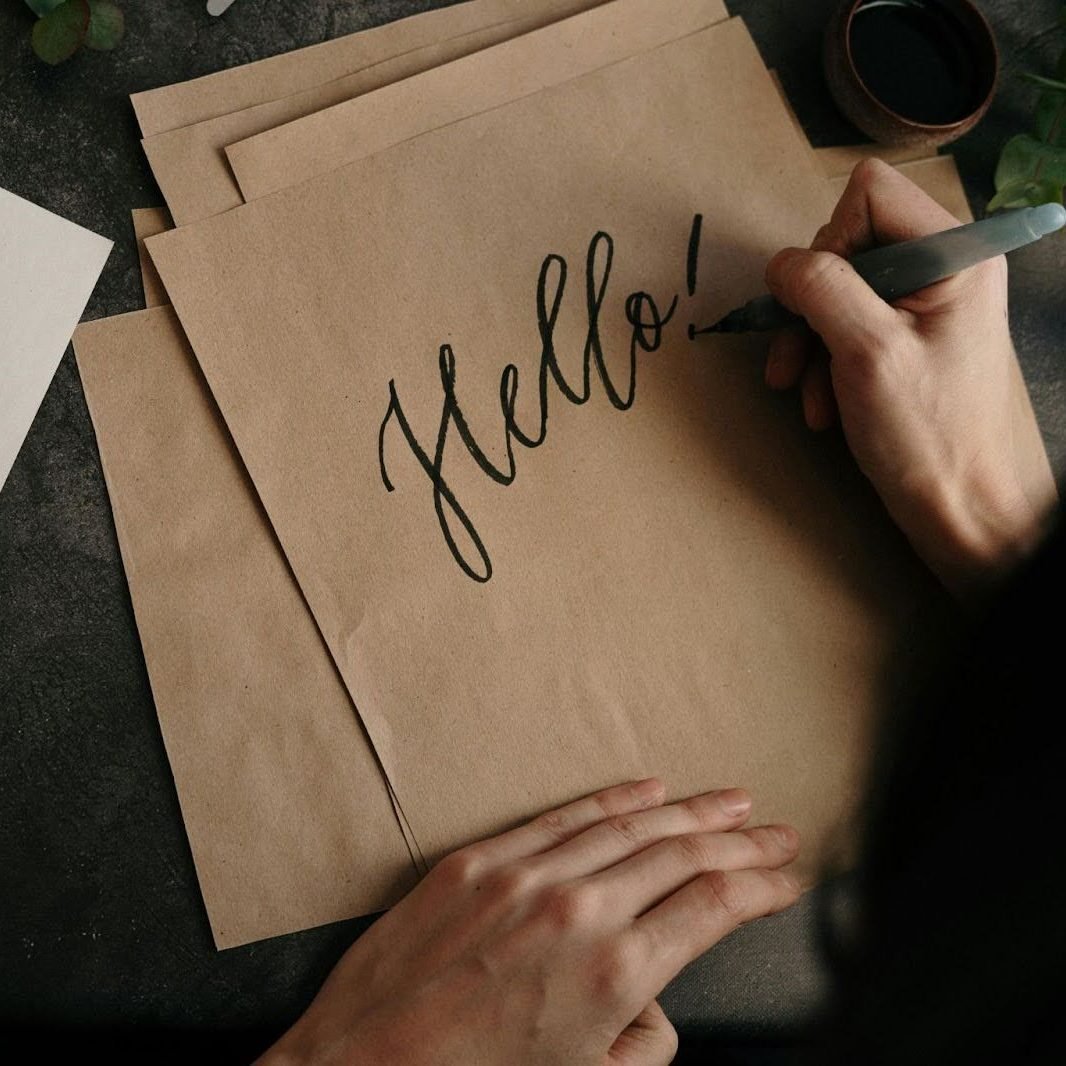
Calligraphy and Typography: A Visual Symphony of Letters
Calligraphy and typography are more than just methods of writing and designing text—they are intricate art forms that blend beauty, precision, and expression. From the graceful strokes of a calligrapher’s pen to the meticulous arrangement of letters in typographic compositions, these disciplines have the power to evoke emotion, convey meaning, and captivate audiences with their visual appeal. In this comprehensive guide, we explore the rich history, techniques, and significance of calligraphy and typography. Uncovering the secrets behind these timeless art forms.
Understanding Calligraphy and Typography
1. Defining Calligraphy

Calligraphy is the art of decorative handwriting, characterized by flowing lines, expressive flourishes, and harmonious proportions. Rooted in ancient traditions, calligraphy encompasses a variety of scripts and styles, each with its own distinct characteristics and aesthetic appeal. From elegant copperplate script to bold brush lettering, calligraphers use specialized tools and techniques to create stunning works of art. It celebrates the beauty of written language.
2. Exploring Typography
Typography is the art and technique of arranging typefaces and letterforms to create visually appealing and legible text. Unlike calligraphy, which is often handcrafted, typography involves selecting and arranging pre-designed fonts and typefaces to communicate information effectively and aesthetically. Typography plays a crucial role in graphic design, branding, advertising, and publishing. It helps shaping the visual identity and communication style of printed and digital media.
The Artistry and Craftsmanship of Calligraphy and Typography
1. Mastery of Tools and Techniques
Calligraphy and typography require a mastery of specialized tools and techniques to achieve precision and finesse in lettering and design. Calligraphers use a variety of writing instruments, such as pens, brushes, and quills, along with ink and paper of different textures and qualities. They use these tools to create diverse effects and styles. Conversely, typographers rely on digital tools and software to manipulate typefaces, adjust kerning and spacing, and refine typographic compositions with precision and accuracy.
2. Understanding Letterforms and Proportions
Both calligraphy and typography place a strong emphasis on the study and understanding of letterforms, proportions, and spacing. Calligraphers learn to master the fundamental strokes and structures of letters in various scripts. Whereas typographers focus on selecting typefaces that convey the appropriate tone and style for a given project. Attention to detail and a keen eye for balance and harmony are essential skills for both calligraphers and typographers.
The History and Evolution of Calligraphy and Typography
1. Ancient Origins
Calligraphy has a long and rich history that dates back to ancient civilizations such as Mesopotamia, Egypt, China, and Greece. From the intricate hieroglyphics of ancient Egypt to the elegant brushwork of Chinese calligraphy. Early forms of calligraphy served as a means of communication, record-keeping, and artistic expression, shaping their respective societies’ cultural and visual landscape.
2. Medieval Manuscripts and Illumination
The Middle Ages witnessed the flourishing of calligraphy in the form of illuminated manuscripts. In this age, scribes meticulously handcrafted ornate letters and embellished them with colorful illustrations and decorative motifs. Monastic scriptoria were centers of calligraphic production, where monks and scribes devoted their lives to copying sacred texts and preserving knowledge for future generations.
3. Printing Press and Typeface Design
The invention of the printing press in the 15th century revolutionized the field of typography, making it possible to produce books and printed materials on a mass scale. Typeface designers such as Johannes Gutenberg and Aldus Manutius developed new typefaces and printing techniques, ushering in an era of typographic innovation and experimentation that continues to influence design to this day.
The Significance and Impact of Calligraphy and Typography

1. Visual Communication and Branding
Calligraphy and typography play a crucial role in visual communication and branding, helping to convey messages, evoke emotions, and establish brand identities. From logos and packaging to websites and advertising campaigns, well-crafted typography and calligraphy can leave a lasting impression on audiences. It also reinforces brand values and fostering customer engagement.
2. Cultural Preservation and Heritage
Calligraphy and typography serve as repositories of cultural heritage and tradition, preserving diverse cultures and civilizations’ history, language, and artistic achievements. From ancient manuscripts and religious texts to contemporary signage and signage, calligraphy and typography provide a window into the past and a bridge to the future. Connecting generations and preserving cultural identity.
3. Artistic Expression and Creativity
Calligraphy and typography offer artists and designers a versatile and expressive medium for creative exploration and experimentation. Whether creating intricate calligraphic compositions or innovative typographic designs, practitioners of these disciplines have the freedom to push the boundaries of lettering and design, creating visually stunning artworks that inspire and captivate audiences.
4. Educational Value and Skill Development
Learning calligraphy and typography fosters valuable skills such as hand-eye coordination, attention to detail, and visual communication. Both disciplines require patience, practice, and dedication to master, but the rewards are well worth the effort. Calligraphy and typography workshops, courses, and tutorials allow aspiring artists and designers to learn from experienced practitioners. Also, it develops their skills in a supportive and collaborative environment.
Unlocking the Advantages of Calligraphy and Typography: A Fusion of Art and Communication
Calligraphy and typography, while distinct in their techniques and applications, share common advantages that extend beyond their aesthetic appeal. These disciplines, rooted in the art of lettering and design, offer numerous benefits to practitioners and enthusiasts alike. Let’s explore some of the key advantages of calligraphy and typography:
1. Enhanced Communication
Calligraphy and typography play a crucial role in enhancing communication by making written language more visually appealing and accessible. Well-designed typography and carefully crafted calligraphy can improve readability, legibility, and comprehension, making it easier for readers to engage with written content and absorb information effectively.
2. Visual Impact and Branding
Both calligraphy and typography have the power to create a strong visual impact and leave a lasting impression on audiences. In branding and marketing, well-executed typography and calligraphy can help companies establish a distinct visual identity, communicate brand values, and differentiate themselves from competitors. Logos, packaging, signage, and advertising materials are all enhanced by thoughtful typography and calligraphic elements.
3. Cultural Preservation and Heritage
Calligraphy and typography serve as custodians of cultural heritage and tradition, preserving the history, language, and artistic achievements of diverse cultures and civilizations. From ancient scripts and manuscripts to contemporary signage and digital fonts, these disciplines provide a tangible connection to the past and a bridge to the future, ensuring that cultural identity and heritage are passed down for future generations to appreciate and cherish.
4. Personal Expression and Creativity
Calligraphy and typography offer individuals a creative outlet for self-expression and artistic exploration. Whether practicing traditional calligraphy styles or experimenting with innovative typographic designs, practitioners have the freedom to express their unique style, personality, and creativity through lettering and design. From handcrafted wedding invitations to digital typographic posters, the possibilities for creative expression are endless.
5. Therapeutic Benefits
Engaging in calligraphy and typography can have therapeutic benefits for practitioners, providing a calming and meditative outlet for self-expression and relaxation. The rhythmic movements of pen strokes or the careful arrangement of letters can help reduce stress, improve focus, and promote mindfulness. Many people find solace and satisfaction in the process of creating beautiful lettering and typography, making it a valuable form of artistic therapy.
6. Skill Development and Education
Learning calligraphy and typography fosters valuable skills such as hand-eye coordination, attention to detail, and visual communication. Both disciplines require patience, practice, and dedication to master, but the rewards are well worth the effort. Calligraphy and typography workshops, courses, and tutorials provide aspiring artists and designers with the opportunity to learn from experienced practitioners and develop their skills in a supportive and collaborative environment.
7. Professional Opportunities
Proficiency in these fields opens up a wide range of professional opportunities in fields such as graphic design, advertising, branding, publishing, and digital media. Skilled calligraphers and typographers are always in demand. Their ability to create visually engaging and effective communication materials that resonate with audiences. Whether freelancing or working for design agencies, professionals with expertise in calligraphy and typography have the opportunity to make a meaningful impact in their chosen field.
Conclusion
Calligraphy and typography are not just practical skills. They are forms of artistic expression that have shaped the way we communicate, record information, and express ourselves visually. From ancient scripts and medieval manuscripts to modern graphic design and digital typography, the art of lettering and design continues to evolve and adapt to new technologies and cultural influences. By exploring the rich history, techniques, and significance of calligraphy and typography, we gain a deeper appreciation for these timeless art forms and the enduring power of the written word.













